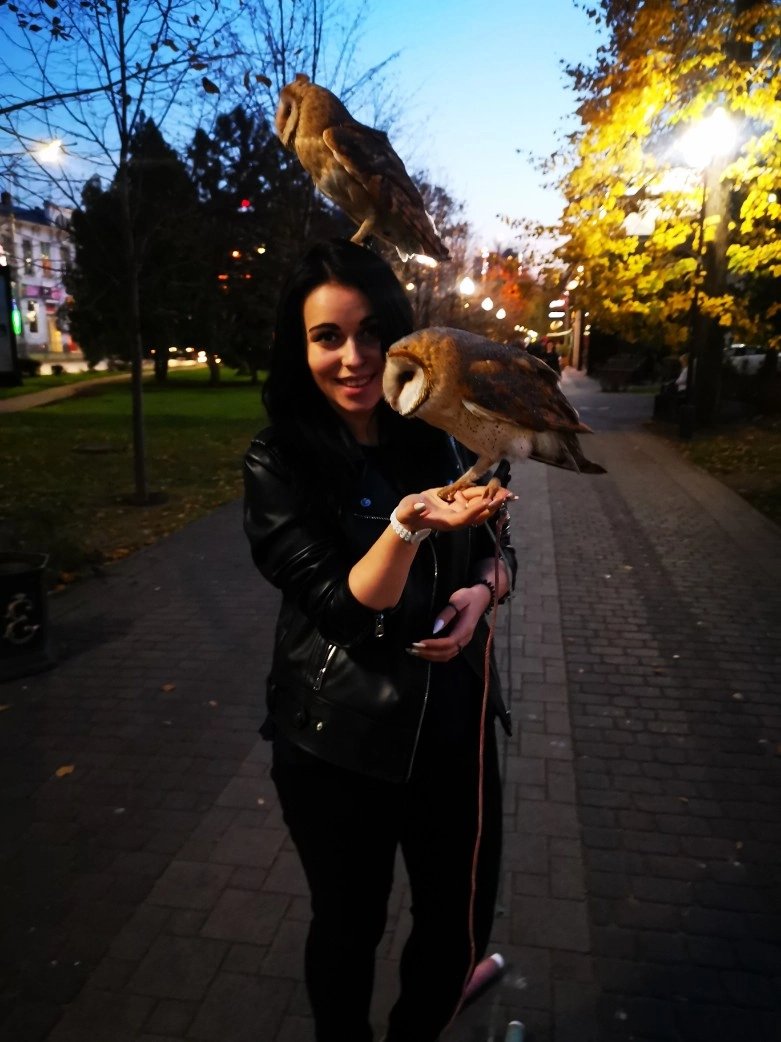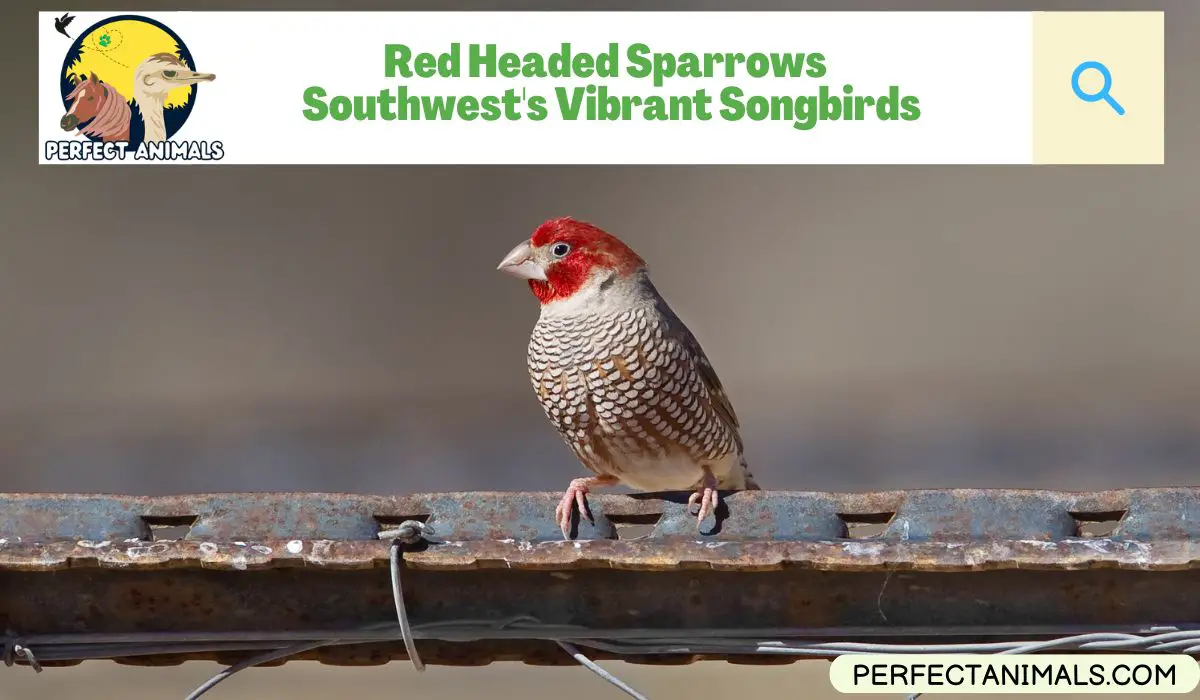The vibrant red headed sparrow is a small songbird notable for the male’s striking bright red crown and nape feathers.
As a member of the Emberizid family alongside similar birds such as juncos and towhees, the red headed sparrow displays the trademark conical beak perfect for consuming seeds and insects.
Approximately six inches in length, the red headed sparrow sports a gray face and underbelly with black streaks contrasting its reddish-brown upperparts and wings.
The female lacks the namesake vibrant red feathers on the head, instead bearing a pale brown crown.
Found primarily in the southwestern United States through Central America, the red-headed sparrow can be spotted rustling through shrubs or perched on low branches as it scouts for food.
Read on to learn more about where these birds live, what they eat, and how they differ from their related bird species.
What Does a Red Headed Sparrow Look Like?
The most striking feature of the red headed sparrow, as its name would suggest, is the bright red feathers on the male’s head.
The red hue extends as a cap from the bird’s forehead down below the nape of its neck.
Contrasting with the crimson red crown is a pale gray face and throat.
The chest and underbelly are also a light gray, changing into dusky rust or light brown plumage on the upperparts and wings.
Black streaks and markings decorate the underparts and back.
The female lacks the signature bold red on its head, instead sporting pale brown feathers on its crown that blend in with the duller brown upper plumage.
Both sexes have short conical beaks typical of sparrow species that they use to forage for seeds and insects.
The red headed sparrow’s stout body and long tail give it a distinctive elegant silhouette amongst shrubs.
About six inches in size, these songbirds combine striking colors and patterns with agile movements as they scour lower branches and ground brush.
When resting, the red headed sparrow’s colorful head serves as a vibrant ornament atop its more neutral wings and body.
You May Also Like – Bird Poop Good Luck Can Boost Your Destiny
Where Can Red Headed Sparrows Be Found?
The red headed sparrow inhabits areas of the southwestern United States and down into parts of Central America.
In the US, it can primarily be spotted across New Mexico and Arizona, as well as areas of neighboring states like western Texas.
This species tends to thrive in landscapes dominated by shrubs, brush, and arid grasslands.
You’re likely to encounter the red headed sparrow flitting through sagebrush or perched on branches of pinyon pines or junipers.
They also forage among yucca, oak, and mesquite trees dotting the countryside.
These songbirds may venture into rural residential spaces too if suitable scrub vegetation exists.
Outside of the breeding season, red headed sparrows may expand their range further southeast to Mexico and Guatemala.
However, core populations concentrate in the highland regions of Arizona, feeding on grass seeds and taking cover in low bushes across prairies and foothills of the Rocky Mountains.
Keep an eye out for the red headed sparrow’s distinct vivid red cap in areas of short vegetation throughout the Southwest.
You May Also Like – What Birds Lays Blue Eggs?
What Do Red Headed Sparrows Eat?
The diet of red headed sparrows consists primarily of seeds and insects.
Being ground feeders, these birds utilize their conical beaks to forage among low-growing shrubs and brush-seeking seeds.
Common plants they extract seeds from include sages, saltbushes, fescues, peppergrass, and a variety of desert wildflowers and grasses.
Red headed sparrows scrape their beaks along the ground to uncover fallen seeds to consume.
They will additionally seek out ripe seed heads still attached to plants, clasping the stocks with their feet while collecting seeds.
Caterpillars, grasshoppers, beetles, spiders, and ants also provide an abundant protein source to supplement the red headed sparrow’s seed-based meals.
The birds clamber through branches and perch on stems of shrubs while hunting for crawling and flying insects to snatch.
Careful observers may spy red headed sparrows dust bathing in dry dirt; this allows them to dislodge any parasites from their feathers.
In winter months seeds become the primary part of their diet.
But come spring and summer, they can dine on a wide buffet of native Southwest vegetation and insect prey.
You May Also Like – Why Do Owls Hoot?
Differences Between Sparrow and Finch
While sparrows and finches may seem similar to small brownish birds, they exhibit several key differences in their physiology, behavior, and preferred environments.
Sparrows’ more nondescript earthy plumage provides natural camouflage as they scour low-lying vegetation, whereas brightly colored finches sport hues fitting for their aerial acrobatics.
Beyond outward appearances, subtle variations manifest in the birds’ specialized beaks, nest architecture, flight, and songs.
| Feature | Sparrows | Finches |
| Beak shape | Conical beak for cracking seeds | Cone-shaped beak, sharp and pointed for shelling seeds |
| Plumage | More subdued earth tones like brown, black and gray | Often brighter colors like red, yellow, purple |
| Native habitat | Field edges, woodland thickets, shrubs | Many live near water sources like marshes & wetlands |
| Flight pattern | Generally low, bounding flight close to cover | Sweeping flight often high up landing across more open areas |
| Song | Simpler more repetitive chirping vocalizations | Sweeping flights often high up landing across more open areas |
| Socialization | Travel in looser flocks | Highly social, may gather in large dense flocks |
| Diet | Mostly seeds and insects | Mainly granivorous, higher proportion of seeds |
| Nesting | Cup-shaped nests low in shrubs and bushes | Intricate, woven flask-shaped nests |
In summary, while sparrows and finches share similarities as small seed-eating songbirds, finches tend to be more colorful and musical compared to the more humble sparrows that blend into their habitat.
Their beak shapes, preferred habitats, flight patterns, and nesting behaviors also differ.
You May Also Like – Top 10 Birds With Long Beaks
Final Thoughts
The vibrant flash of crimson on the male red headed sparrow’s crown certainly catches the eye.
Yet a closer look reveals there is more to this Southwestern songster beyond its namesake red head feathers.
Evaluating differences with its kin, the finch shows it is well adapted to its scrubland habitat, equipped with a seed-cracking beak and inconspicuous earth-toned plumage allowing it to blend into the desert backgrounds.
Though small, red headed sparrows play an integral role in scattering seeds and keeping insect populations in check while brightening up their terrain.
As development encroaches on their native brushlands, preserving stretches of open yet scrubby wilderness habitats helps ensure species like the red headed sparrow continue to grace the Southwest landscapes for years to come.
Taking time to appreciate subtle desert dwellers like the red headed sparrow reveals an abundance of diversity worth protecting in this fragile ecosystem.
Resources – (for further reading)
All About Birds – House Finch
BirdWeb – House Finch
All About Birds – House Sparrow Identification

Larissa Adler, an Ornithology graduate from Charles Sturt University, is an avid birdwatcher with a passion for avian behavior and ecology. With extensive fieldwork experience studying bird migration patterns and nesting behaviors, Larissa brings a practical and insightful perspective to our bird-related articles.

